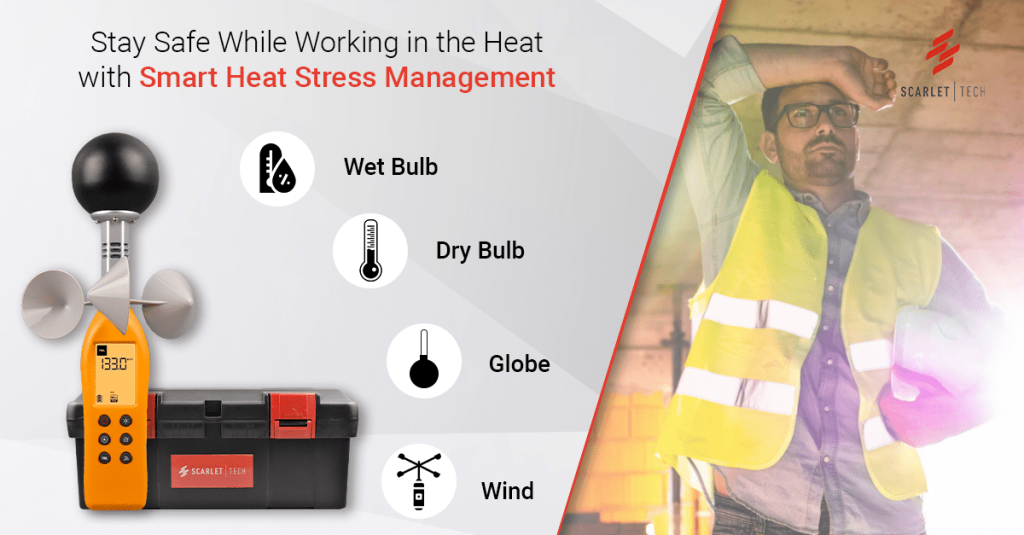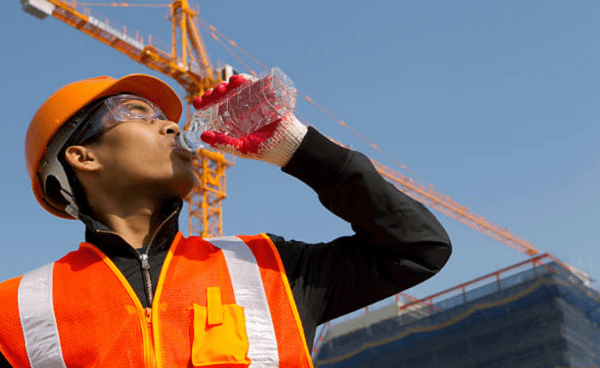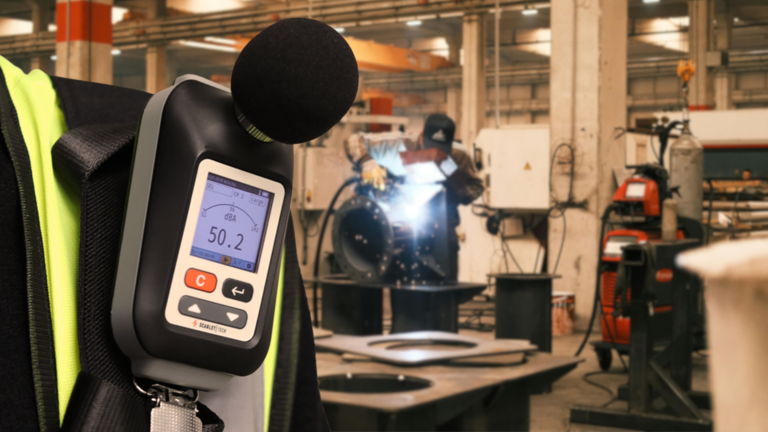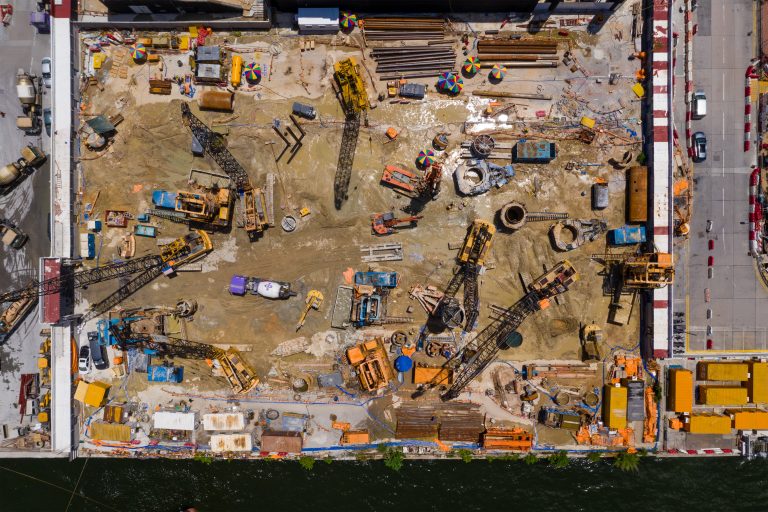Heat Stress in Human Body
A person experiences heat stress when their bodies are unable to maintain a healthy body temperature naturally. Sweating is the body’s natural response to control and regulate temperature; however, it may not always be enough to prevent overheating in environments with high temperatures and humidity.
Portable heat stress monitors, such as the TWL-1S Heat Stress Monitor, are commonly used to monitor heat stress indices in order to prevent worker heat stress and fatigue. Furthermore, staying hydrated and taking frequent breaks in the shade or a cooler area can help prevent heat-related injuries and illness.
Wet-Bulb Globe Temperature (WBGT) vs Thermal Work Limit (TWL)
Thermal Work Limit and Wet-Bulb Globe Temperature (WBGT) are indices used to measure the level of heat stress experienced by workers.
Wet-Bulb Globe Temperature (WBGT):
WBGT is a measure of the heat stress in direct sunlight, considering factors such as temperature, humidity, wind speed, and sunlight radiation on humans. WBGT is commonly used to determine appropriate exposure levels of high temperatures and as a guide to managing heat stress safety in the workplaces.
WBGT monitoring requires the use of a dry bulb to measure air temperature, as well as a thermometer in a wet cotton sleeve and a thermometer in a block globe to account for radiant heat. However, it is important to note that WBGT does not account for factors such as the clothing, PPE, or the workload of workers on-site, which can affect the accuracy of readings.
Thermal Work Limit (TWL):
TWL is a heat stress indices developed to address WBGT inadequacies and is used to schedule work-rest schedules based on the safe TWL value. TWL is calculated using five environmental factors, including dry bulb, wet bulb, and globe temperatures (all of which are used by the WBGT measurement), as well as wind speed, atmospheric pressure, and clothing factors, to determine the safe maximum continuously sustainable metabolic rate (W/m2) for the working conditions.
TWL has been widely accepted by many industry professionals as the more accurate and reliable measurement of heat stress. TWL has been shown to be a more realistic and valid index of heat stress and provided management with workable strategies for managing heat stress (Miller and Bates, 2007 1).
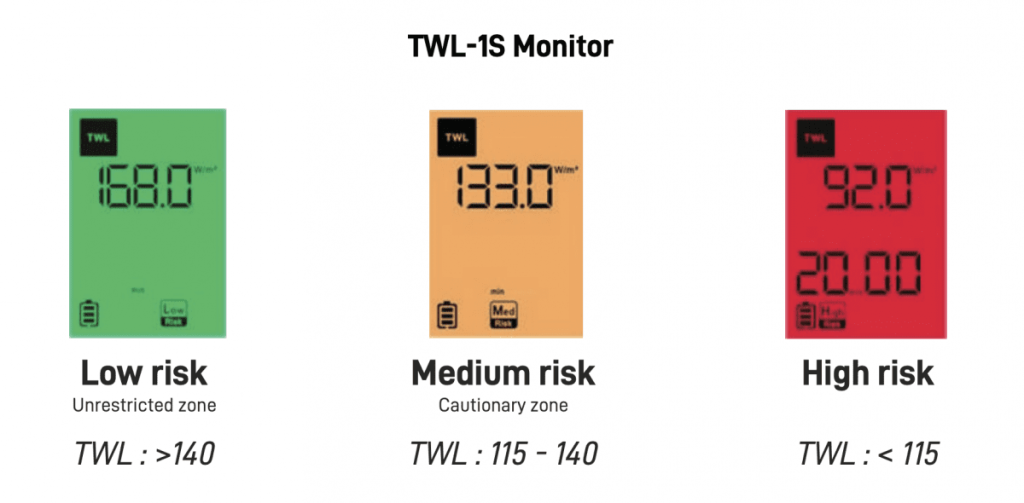
How to Measure Heat Stress
Whether you are measuring heat stress indoor or outdoor at construction sites, factories, or mining areas, Scarlet TWL-1S Heat Stress Monitor is your go-to portable heat stress monitor for accurate heat risk assessment.
